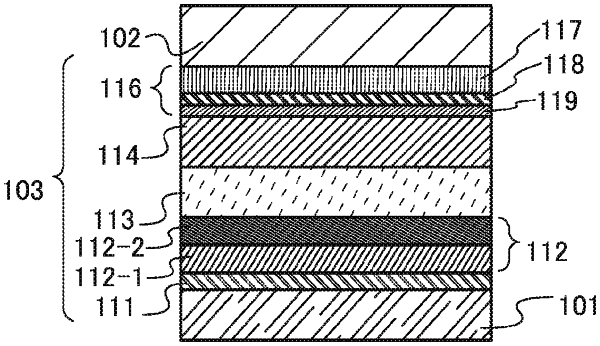| CPC H10K 50/11 (2023.02) [H10K 85/6574 (2023.02); H10K 2101/30 (2023.02); H10K 2101/40 (2023.02)] | 23 Claims |

|
1. A light-emitting device comprising:
an anode;
a cathode; and
an EL layer between the anode and the cathode,
wherein the EL layer comprises a first layer, a second layer, a third layer, and a light-emitting layer in this order from the anode side,
wherein the first layer comprises a first organic compound and a second organic compound,
wherein the second layer comprises a third organic compound,
wherein the third layer comprises a fourth organic compound,
wherein the light-emitting layer comprises a fifth organic compound and an emission center substance,
wherein the first organic compound exhibits an electron-accepting property with respect to the second organic compound, and
wherein a difference between a HOMO level of the fourth organic compound and a HOMO level of the fifth organic compound is less than or equal to 0.24 eV.
|